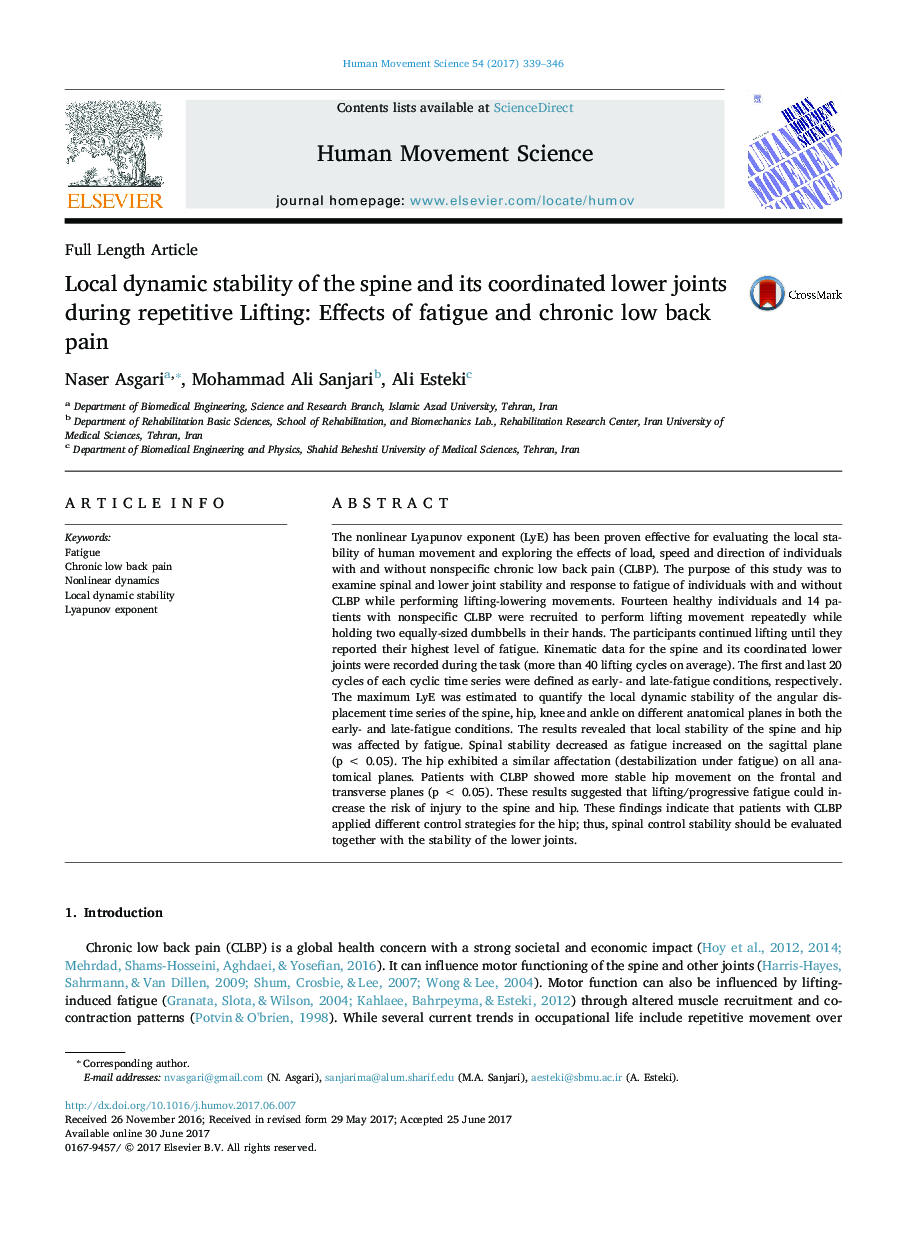| Article ID | Journal | Published Year | Pages | File Type |
|---|---|---|---|---|
| 5041993 | Human Movement Science | 2017 | 8 Pages |
â¢Local dynamic stability is evaluated using nonlinear approach of Lyapunov exponent.â¢LyE of spine and its' coordinated lower joints' angular time series are estimated.â¢Local dynamic stability of spine (sagittal) and hip (3D) was affected by fatigue.â¢Strategy of control of stability should be evaluated for all coordinated joints.â¢CLBP patients used different control strategy in comparison to healthy individuals.
The nonlinear Lyapunov exponent (LyE) has been proven effective for evaluating the local stability of human movement and exploring the effects of load, speed and direction of individuals with and without nonspecific chronic low back pain (CLBP). The purpose of this study was to examine spinal and lower joint stability and response to fatigue of individuals with and without CLBP while performing lifting-lowering movements. Fourteen healthy individuals and 14 patients with nonspecific CLBP were recruited to perform lifting movement repeatedly while holding two equally-sized dumbbells in their hands. The participants continued lifting until they reported their highest level of fatigue. Kinematic data for the spine and its coordinated lower joints were recorded during the task (more than 40 lifting cycles on average). The first and last 20 cycles of each cyclic time series were defined as early- and late-fatigue conditions, respectively. The maximum LyE was estimated to quantify the local dynamic stability of the angular displacement time series of the spine, hip, knee and ankle on different anatomical planes in both the early- and late-fatigue conditions. The results revealed that local stability of the spine and hip was affected by fatigue. Spinal stability decreased as fatigue increased on the sagittal plane (p < 0.05). The hip exhibited a similar affectation (destabilization under fatigue) on all anatomical planes. Patients with CLBP showed more stable hip movement on the frontal and transverse planes (p < 0.05). These results suggested that lifting/progressive fatigue could increase the risk of injury to the spine and hip. These findings indicate that patients with CLBP applied different control strategies for the hip; thus, spinal control stability should be evaluated together with the stability of the lower joints.
